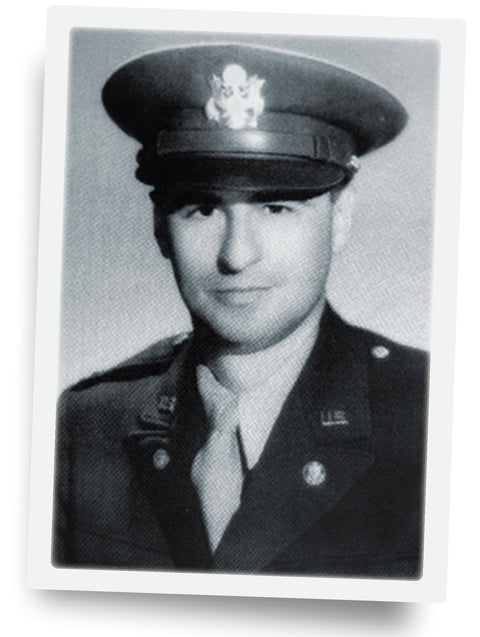
These Dr. Seuss Cartoons Were Not Meant for Children
He was not yet the iconic children’s book author we all know and love—he wouldn’t become that until after The Cat in the Hat became a bestseller in 1957—but Theodor Seuss Geisel made his voice heard in the months before the United States entered World War II. As an editorial cartoonist for the left- leaning daily newspaper PM , the man the world came to know as Dr. Seuss used his skills to alert America about the growing threat of world war. He wielded his pen to flay notable figures like Germany’s Adolf Hitler, Italy’s Benito Mussolini, and Japan’s Hideki Tojo but also took aim at American isolationists, most notably Charles Lindbergh, the famed aviator and a key member of the America First Committee. Once the U.S. was in the war, Geisel added Americans who weren’t doing their part for the war effort to his list of targets and attacked anti- Semitism and racism (although his protrayals of the Japanese can seem uncomfortably racist themselves today). As graphic artist Art Spiegelman says in his introduction to the book Dr. Seuss Goes to War: The World War II Editorial Cartoons of Theodor Seuss Geisel , “the cartoons let us know what happens when Horton hears a heil.”
Horton the elephant was, of course, one of the beloved creations of the man who called himself Dr. Seuss. Born in Springfield, Massachusetts, in 1904, Geisel became known for his advertisements for Flit, a bug spray manufactured by Standard Oil. (Flit makes an appearance in some of his PM cartoons.) By World War II he had also published a few children’s books, And to Think That I Saw It on Mulberry Street (1937), The 500 Hats of Bartholomew Cubbins (1938), The King’s Stilts (1939), and Horton Hatches the Egg (1940). None of them enjoyed the success of his postwar work.
Increasingly concerned about the rise of fascism, Geisel penned an attack on the Italian editor and fascist supporter Virginio Gayda. A friend of Geisel’s showed the cartoon to Ralph Ingersoll, the founder and publisher of PM , who printed it in the January 30, 1941, edition. Geisel was off and running. Over the next two years he drew more than 400 cartoons for PM and heaped comical scorn on his subjects. “Ted’s cartoons grew savagely eloquent and often very funny, displaying his gift for derision,” wrote biographers Judith and Neil Morgan. The last cartoon Geisel drew for PM ran on January 5, 1943. Two days later Geisel joined the army and went to work for the Signal Corps unit under Hollywood director Frank Capra.
(April 25, 1941)
Charles Lindbergh and other American isolationists provided Geisel with the
subjects for many cartoons in the months before the U.S. entry into the war.
(August
20, 1941) Hitler attacked the Soviet Union on June 22, 1941. Two months later
Geisel correctly predicted a difficult campaign for Germany that would last
into the Russian winter.
(August 28, 1941) Geisel, like other
interventionists, felt that America’s industrial might and democratic ideals
would overwhelm the Axis powers once they were unleashed.
(October
1, 1941) The America First Committee, with Lindbergh as a spokesperson,
campaigned to keep America out of the war in Europe. Geisel provided a steady
drumbeat of support for American intervention.
(November 10, 1941) Hitler has his
hands full handling his conquered territories in a cartoon that Geisel would
later echo with the Whos’ musical instruments in How the Grinch Stole
Christmas (1957).
(December 8, 1941) The cartoon published
the day after the attack on Pearl Harbor celebrated the end of American
isolationism. Geisel often depicted the movement as an ostrich that preferred
to keep its head buried in the sand.
(December 22, 1941) Italian dictator
Benito Mussolini, Adolf Hitler’s most prominent ally, was a frequent target of
Theodor Geisel’s ire. In this cartoon Geisel gives Mussolini a fig leaf made
from Hitler’s manifesto in a play on the charitable “Bundles for Britain”
campaign.
(December
24, 1941) PM was a leftist publication but Geisel himself was anti-communist.
Still, once Hitler attacked the Soviet Union, Geisel cast Stalin and the USSR
in a favorable light.
(January 22, 1942) The U-boat menace became
a growing threat to American shipping once Germany declared war on the U.S. In
a later cartoon, Geisel chided coastal communities for not dousing their
lights.
(February 13, 1942) In a cartoon that
has not aged well, Geisel stoked fears that Japanese Americans were secretly
working for Japan. That was not the case, but more than 125,000 people, most
of them American citizens, were interned in camps during the war.
(May 15,
1942) Free Americans express their irreverent disdain for Hitler by thumbing
their noses. In a sense, this is exactly what Geisel did with his cartoons.
(April 20,
1942) News of Lt. Col. James Doolittle’s April 1942 bombing raid on Tokyo
provided a morale boost for Americans and a shock to the Japanese.
(June 10, 1942)
When the American navy sank four Japanese carriers at the Battle of Midway on
June 4, 1942, it did indeed mark a turning point in the war, just as Geisel’s
cartoon indicates.
(June 26, 1942) Even after war came to the
United States, Geisel didn’t hesitate to point out the shortcomings in the
American war effort. Here he bemoans the obstacles African American workers
had to overcome to contribute. American anti-Semitism provided Geisel with
another topic for his work. In early 1943 he joined the army to make his own
contribution to the war.
